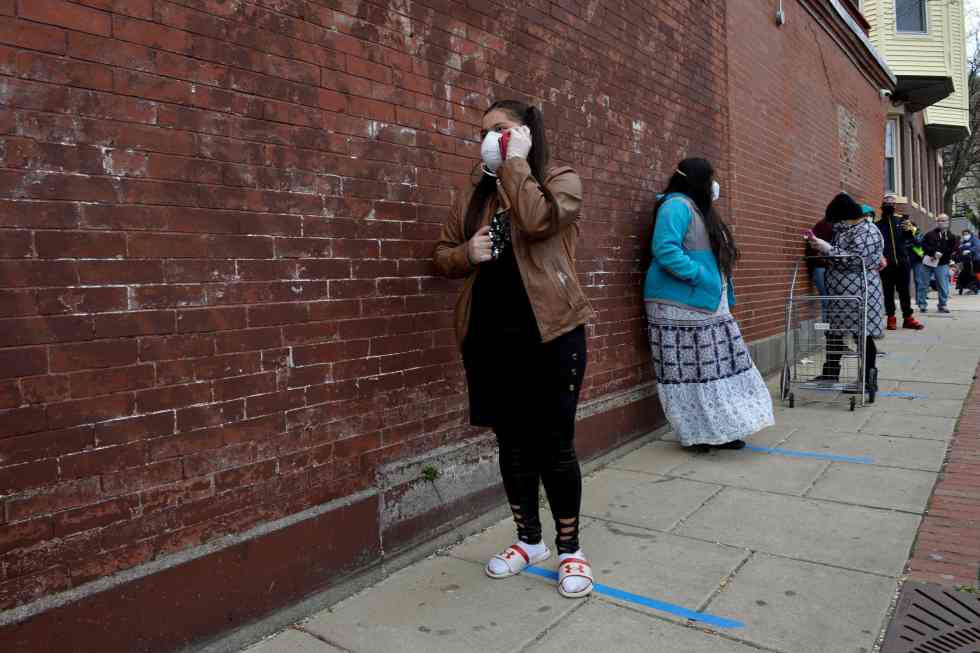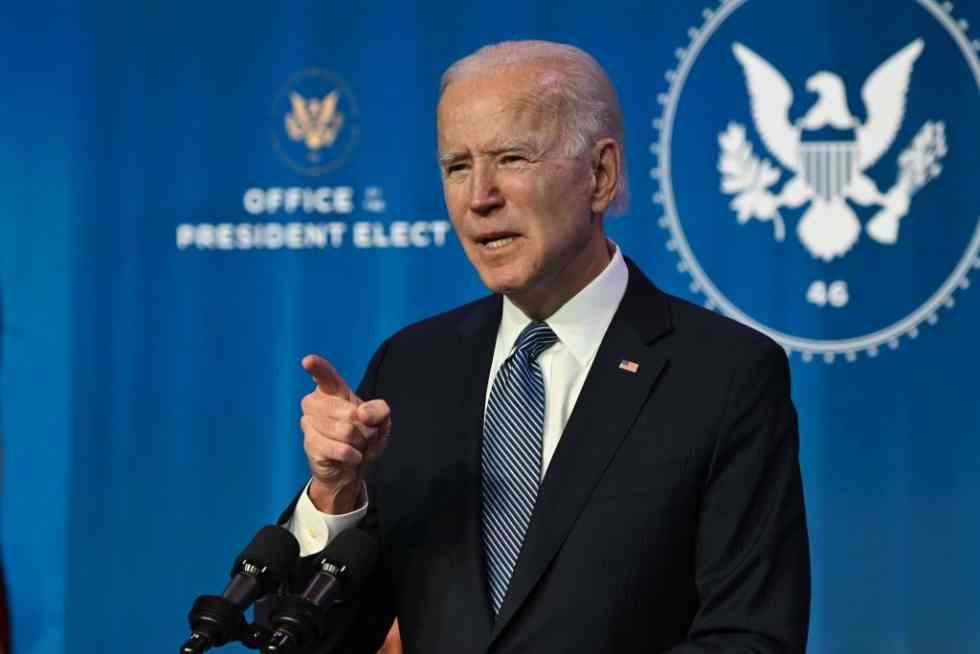We’re amid a catastrophic pandemic that’s disproportionately hurting communities of coloration. The dual disasters of Covid-19 and the financial fallout are leaving households reeling from illness coupled with financial and meals nervousness. The US financial system misplaced 140,000 jobs in December. All of them have been held by ladies and folks of coloration. Vaccinations are starting, providing much-needed hope, however sadly it is not going to undo the financial injury COVID has completed to communities of coloration.
At the moment, community-led infrastructure job creation is essential to handle the huge job losses that these marginalized populations have endured as a part of the worst-hit labor market. The brand new Congress and Biden Administration might want to create jobs and alternatives rapidly to assist get folks again to work, particularly in distressed communities. To try this, they might want to empower frontline leaders with go-fast, start-up funding wanted to kick-start their most important tasks. President-elect Biden’s new emergency restoration proposal properly begins down this street, with an preliminary proposal for $3 billion for regional financial restoration by way of the Financial Growth Administration. The fact is they will do rather more.
The little financial restoration we now have seen has been wildly uneven. Housing has surged whereas probably the most uncovered industries proceed to endure. Individuals are struggling to outlive because the untenable coronavirus and its greater than 1 million new instances per week proceed.
Since April, staff of coloration have confronted the very best charges of pandemic-related unemployment. It’s astounding that Black and Latino persons are dealing with higher charges of unemployment than they skilled within the 2008 Nice Recession. Half-time staff and staff in low-wage sectors are seeing a few of the highest job losses within the pandemic. They proceed to face growing and unprecedented charges of unemployment and underemployment.
In the perfect of occasions, Latino and Black staff occupy jobs which have been worn out by this pandemic. Black and Latino are closely represented in service, manufacturing, transportation, materials transferring, pure sources, development, and upkeep occupations, Lots of these job losses are concentrated in extraordinarily essential sectors each for financial progress and racial fairness, most notably, the general public sector.
In September 800,000 educators within the public sector have been compelled from their jobs, because of COVID, in response to the Middle For Regulation and Social Coverage November Jobs report. Losses in a single sector translate to job loss in associated sectors. As many kids keep residence, different industries, just like the childcare sector, haven’t seen jobs return both. Sadly, job positive aspects are in high-risk, excessive contact, however low-wage industries. Jobs with excessive potential for coronavirus publicity are those that stay.
The issues are clear, we have to establish and implement possible options with long-lasting results.
We noticed what occurs when top-down financial aid packages are enacted. Firms and the rich by and enormous pocketed their financial aid packages and didn’t move them right down to those that desperately want them. Alejandra Castillo, CEO of YWCA USA and former Nationwide Director of the Minority Enterprise Growth Company for the Obama Administration offered this perception:
“We all know from the previous that we can’t simply make investments on the high and hope for trickle-down impression, this pandemic has amplified what many people on the bottom already knew: that ladies and communities of coloration have lengthy confronted social and structural infrastructure divestment. We have to re-imagine the well being and prosperity of communities and construct a complete social and bodily infrastructure plan that may create well-paying jobs. To actually do that we have to play to the place the way forward for our financial system goes in addition to the way forward for work.”
To keep away from an identical downside with subsequent authorities stimulus funds, Dan Carol a veteran of the Obama Administration who serves on the college of Georgetown College’s City & Regional Planning program stated:
“We all know that we should prioritize financial restoration efforts to achieve communities of coloration and distressed city and rural communities. To jumpstart restoration and resurgence, we have to get catalytic capital and capability into the arms of native leaders who already know what neighborhood infrastructure tasks they should construct, from hospitals and emergency services to scrub water.”
Undoubtedly, we’re going to have to start out from the underside up, following the acceleration pathways recognized by way of analysis by The Milken Institute which factors to a few Obama-era packages as a path ahead. These packages sought to catalyze equitable neighborhood improvement and offered research-based proof of what’s attainable. These packages level the best way ahead if they’re fine-tuned to suit present wants and challenges.
First, the Partnership for Sustainable Communities, introduced HUD-EPA and DOT {dollars} collectively to fund neighborhood plans. However because of a scarcity of challenge implementation {dollars}, these failed to supply substantive change. Predevelopment funding would repair that.
Second, the Investing in Manufacturing Neighborhood Partnerships (IMCP) program did not supply communities a dime, however licensed communities as “prepared” and capable of mix federal program {dollars} that by themselves have been too rigid to make use of. But this revolutionary strategy to funding new native manufacturing initiatives was killed by Congressional appropriators who wish to management doling out earmarks. The IMCP deserves a re-examination, boosted by an preliminary jumpstart grant.
Third, the profitable $2 billion State Small Enterprise Credit score Initiative to get funding out to communities is a robust instance of the Obama period program construction that’s quick however accountable. It presents a robust mannequin to construct from. Below this initiative, funding flowed to Governors to handle a particular want (funding for entrepreneurs), the US Treasury did the oversight, and robust program evaluations stored watch on taxpayer funds.
Utilizing this fundamental construction, with a carve-out purpose to make sure funding flows to no less than 50 % of probably the most distressed communities, may very well be the guts of a Neighborhood Catalyst fund thought.
Lastly, creating an Workplace of Neighborhood Mobilization throughout the Nationwide Financial Council or the Home Coverage Council would strengthen the impression of those packages. This may additionally assist to make sure that siloed federal businesses lean into a brand new set of metrics that worth neighborhood outcomes over programmatic orthodoxies.
Job creation is essential. Susceptible communities are dealing with insurmountable challenges and losses. Media pictures of countless traces of individuals ready for meals containers inform a surprising and plain story. Job loss, meals and housing insecurity, and a scarcity of insurance coverage are making a depression-like expertise for a lot of with long run penalties for everybody.
As Congress and this new administration are set to debate what might in the end be lifesaving laws, decisive and long-lasting motion is critical. The important thing groundwork was laid by the Obama-Biden administration for brand new supply programs that may be scaled with new capital and capability and given on to frontline leaders. The time to behave is now. Bi-partisan efforts by Senators Cory Booker (D-NJ) and Tim Scott (R-SC) to fortify their authentic 2016 Alternative Zones proposal for delivering catalytic funding to create jobs and neighborhood infrastructure must also be integrated into native options.
Kristian Ramos is the founder and principal of Autonomy Methods and a former spokesman for the Congressional Hispanic Caucus.
The views expressed on this article are the writer’s personal.











Leave a Reply